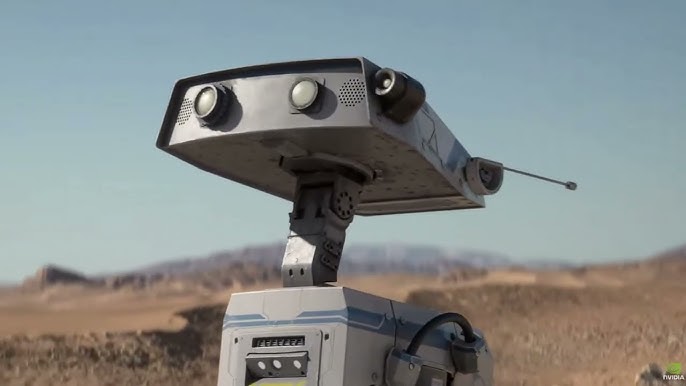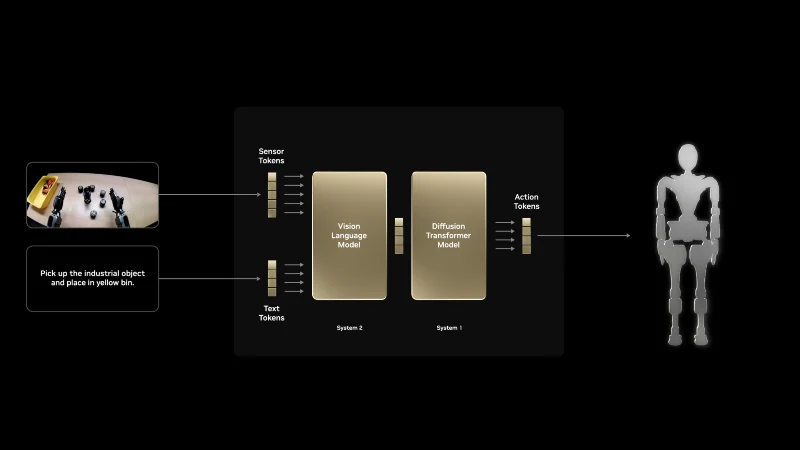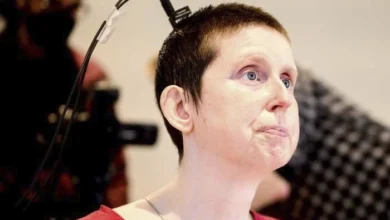The Rise of Lifelike Robots: NVIDIA’s Isaac GR00T N1, Google DeepMind, and “Blue” – Disney’s Expressive Robot Are Changing the Game

Story highlights
- The Technology Bringing Robots to Life
- Meet "Blue" – Disney’s Expressive Robot
- NVIDIA’s GTC 2025: Pioneering the Future of AI and Robotics
- A Future Where Robots Walk Among Us
Robots are no longer just machines; they are becoming more human-like, expressive, and interactive. NVIDIA, Google DeepMind, and Disney are pioneering a new era of robotics, blending cutting-edge AI with real-world applications. What once seemed like science fiction is now reality, as robots prepare to enter our theme parks, homes, and workplaces.

At the heart of this transformation is NVIDIA’s Isaac GR00T N1, a groundbreaking AI model designed to give humanoid robots intelligence and adaptability like never before. These innovations are making robots smarter, more engaging, and more capable of working alongside humans.
The Technology Bringing Robots to Life
Disney’s robotics research, backed by Google DeepMind and NVIDIA, has introduced Newton, an open-source physics engine that gives robots fluid, natural movement. Whether it’s animatronic characters in theme parks or AI-powered service robots, this technology is setting new standards in robotics.
Key Innovations Driving the Robotics Revolution:
Newton Physics Engine – Allows robots to move with realistic, physics-based motions.
NVIDIA’s Warp Framework – A powerful simulation tool that speeds up learning.
DeepMind’s AI Algorithms – Enhances robotic intelligence, making them more interactive.
Disney’s Animatronics Expertise – Decades of experience creating lifelike robotic characters.
These technologies are not just about making robots move—they’re about making them more expressive, responsive, and human-like in their interactions.
Meet “Blue” – Disney’s Expressive Robot
A major breakthrough in robotic expression was showcased at NVIDIA’s GTC 2025 conference, where CEO Jensen Huang introduced “Blue,” an advanced humanoid robot inspired by Star Wars droids.
What makes Blue different?
Expressive facial movements that mimic human emotions with precision.
Real-time interaction, allowing it to respond to gestures and conversations naturally.
Fluid, realistic movement, powered by NVIDIA and DeepMind’s advanced AI.
Disney plans to integrate these robots into theme parks, where visitors will interact with them just like they would with human characters. Imagine walking through a futuristic park where robots greet, entertain, and respond to guests in a way that feels almost magical.
NVIDIA’s GTC 2025: Pioneering the Future of AI and Robotics
The GPU Technology Conference (GTC) 2025, held in San Jose, showcased NVIDIA’s latest advancements in artificial intelligence (AI), robotics, and computing technologies. CEO Jensen Huang delivered a keynote that highlighted several groundbreaking developments poised to reshape various industries.
Key Takeaways from GTC 2025:
Blackwell Ultra Platform: A next-gen AI platform enhancing performance and efficiency for AI data centers.
Annual Infrastructure Roadmap: NVIDIA committed to a yearly innovation cycle to support AI advancements.
Omniverse for Data Centers: A 3D simulation platform optimizing data center planning and energy efficiency.
Project GR00T: A new AI foundation model designed to revolutionize humanoid robotics.
6G Research Cloud Platform: NVIDIA’s initiative to integrate AI into next-gen wireless communication.
These advancements showcase NVIDIA’s role in shaping the future of AI and robotics across industries. As these technologies evolve, the collaboration between AI and robotics is set to transform sectors ranging from data centers to everyday consumer interactions, heralding a new era of intelligent automation.
A Future Where Robots Walk Among Us
Humanoid robots are no longer confined to sci-fi movies. Thanks to Isaac GR00T N1 and Disney’s next-gen robotics, the line between humans and machines is blurring.
From expressive theme park characters to highly capable service robots, the future of robotics is more interactive, intelligent, and human-like than ever before. As technology continues to evolve, we are not just building better robots—we are shaping a world where humans and machines coexist, collaborate, and thrive.




